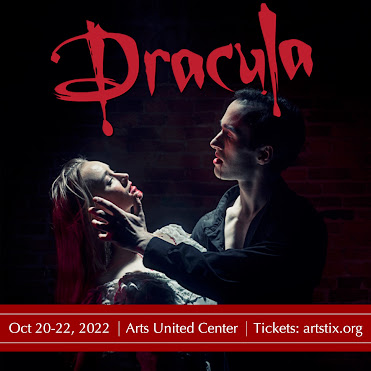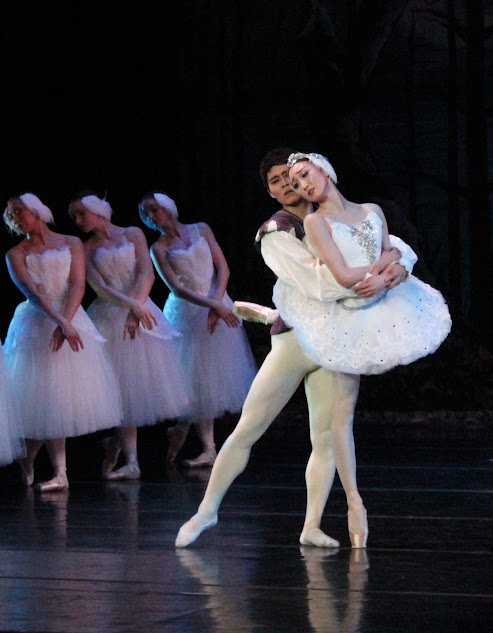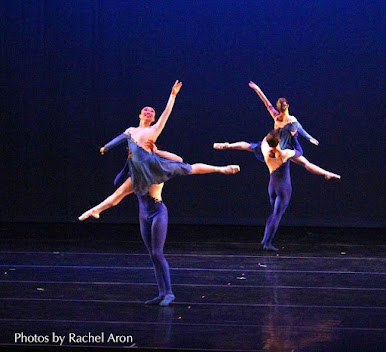Movement to Music: Melodies for Neck Bites
When the curtain opens this weekend on Fort Wayne Ballet’s production of Dracula, it will do so to the creepy plunks of a… broken piano? And the lullabyesque melody it plays pokes at you like the thorns of a nightmare dreamscape. Layered onto a scene of villagers warning a stranger not to go to the mysterious castle, it seems that the laws of neither nature nor music want much to do with our pointy-fanged count.
The instrument in question, in orchestral parlance, is called a prepared piano. Prepared according to the composer’s wishes, it can be wildly unstandardized in its tuning, and often has objects wedged between the piano’s wires to muffle or alter the sound. A quick google search will show you prepared pianos with silverware resting on top of the strings, or bolts and erasers stuck in among them. To look at it, you’d think an unruly ten-year-old was trying to get out of a piano lesson.
The post-modernist composer utilizing this jangling contraption is Alfred Schnittke. The piece we hear is the opening melody of one of Schnittke’s most famous works, the Concerto Grosso No.1. It is the work that brought him to the forefront of the musical movement known as polystylism.
(I will just take a moment to let you know that today’s blog is a companion piece for our latest podcast. If you would like to hear more about the particulars of Schnittke’s compositions from Dr Steven Kandow of the University of Saint Francis, as well as a discussion on our production’s choreography from Ballet Mistress Tracy Tritz, please follow the link attached to this blog and listen to the episode entitled, Dracula: Music of Love and Terror.)
Alfred Schnittke was a Russian of Jewish-German descent. Born in 1934, he spent most of his life behind the Iron Curtain. He converted to Christianity, and this seemed to be a heavy factor in much of his work, as he used music to explore the moral and spiritual struggles of men, and he himself described his music as spiritually driven. In addition to his concertos and symphonies, He wrote music for plays and ballets, and scored over 60 films and television programs.
His non-traditional approach to music did not win him favors with the Soviet government. The Union of Russian Composers was an organization put in place by Stalin, with the intention of regulating the arts and culture taught in the Soviet Union, and that group labeled Schnittke as a radical. The union banned Schnittke’s first symphony and established a travel ban to keep him on Russian soil. It was not until Soviet musicians began defecting to the United States and introducing Schnittke’s music that he began developing a following in the west.
The irony is that Schnittke’s politics were fairly conservative. He flouted musical traditions, but he didn’t actively protest the repression he received from the Communist regime. His philosophy toward music embraced the concept that life itself was polysylistic, so music, if it reflects life, shouldn’t be confined to a rigid structure. Later in his life, after an unfortunate series of strokes, his music became noticeably more conservative. Through illness he continued writing, with more and more indecipherable intent, until his death in 1998.
So, what was this radical style he perfected?
Polystylism is a label with a broad context. It is a compositional style which incorporates multiple types of music, multiple key and time signatures, unexpected instrumentation, and contradictory melodies in the same piece. Contradiction and dissonance are key components in polystylist compositions. One of the early pioneers in this sort of experimental music was an American composer named Charles Ives, who’s music was so contradictory, much of it was deemed virtually unplayable. One of his more famous works operated under the concept of multiple marching bands playing too close together.
Polystylism in its modern essence tends to establish a musical norm, and then veer off in an unexpected direction or interject with surprising non sequiturs and contradictory melodic passages. It is a technique that Schnittke utilized frequently, especially in his earlier works. As Dr. Kandow pointed out in our podcast, one movement in the Concerto Grosso No. 1 features a tango that appears out of nowhere. Just as though Gomez Adams had charged into the room and swept Morticia off her feet.
This type of musical structure is kind of weird… isn’t it? Well, let’s think about it for a second. Schnittke also composed for visual arts – ballet, plays, and film scores. In a film soundtrack, the music follows the action. An action sequence always erupts from tranquility. It’s meant to be unexpected and even startling. Film scores are by necessity polystylistic. More importantly, in the modern age, orchestral music is primarily heard at the movies, and that music is primarily polystylist in nature. Alfred Schnittke wasn’t just modernist/postmodernist. He was… futurist?
I’ve done just a little bit of media scoring; I’ve written musical scores for some animation projects in college. Sometimes you work the action or mood change into the flow of the music. Sometimes you just have to cut in with something as unexpected as whatever jumped on the screen. My definition of polystylism is that music is reacting to something visual that only the composer can see. That’s how it makes sense to me.
That is why Schnittke’s music was so perfect for Dracula. Choreography is like reverse film scoring. Instead of writing music to fit the visual, Tracy Tritz, our Ballet Mistress, wrote movement to fit the twists and turns and sudden spasms of this unique body of work. The result was as unsettling and creepy as a ballet about vampires needed to be.
Now if only someone would create a ballet to the music of John Williams, I can die happy.
Here is a direct link to the companion podcast episode for today’s blog:
Dracula: Music of Love and Terror
The Kinetic Conversations with the Fort Wayne Ballet Podcast library can be found here:
https://fortwayneballet.org/kinetic-conversations/
Or streaming on your favorite platform.
Sources:
https://www.nytimes.com/1999/05/23/arts/music-schnittke-an-iconoclast-becomes-an-icon.html
Schnittke Studies, Edited by Gavin Dixon
Alfred Schnittke, by Alexander Ivashkin
Personal conversations with Dr. Steven Kandow






Comments
Post a Comment